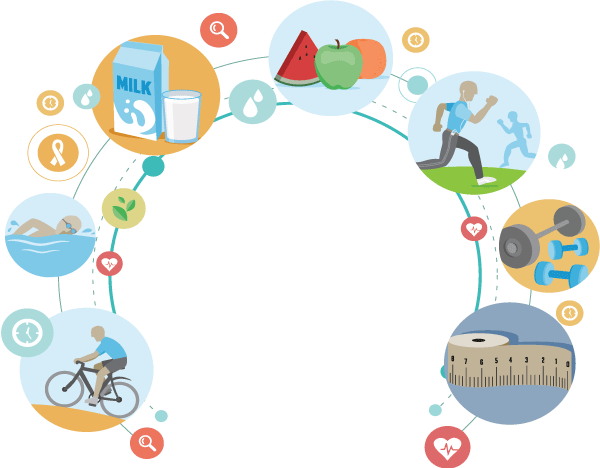Tackling Difficult Airways as a Medical Student & the Future of ED Airway Management
Ben DeYoung, MPH, OMS-III
Kansas City University College of Osteopathic Medicine
EMRA MSC Content Coordinator
Edited by:
Daniel O. Bral, DO, MPH, MSc
Assistant Professor of Anesthesiology at the University of Miami College of Medicine
Allison Gasnick, MS-4
Case Western Reserve University School of Medicine
Chair-Elect, EMRA Education Committee
In a perfect world, securing a crashing patient’s airway would look like our first intubation attempt on a manikin. One of each basic instrument, a clean and dry pharynx, perfect anatomy, and about 10 minutes to ensure the stomach isn’t turning into a third lung. However, all emergency physicians know that this is not a perfect world. Even the most considerate, pre-oxygenated patient with impeccable anatomy can develop a difficult airway. So how can we, as medical students, avoid getting burned as we advance in our training? It’s all in the preparation. Every airway is a difficult airway until proven otherwise.
Initial Assessment and the Role of Bag-Mask Ventilation
The most critical skill in airway management is effective bag-valve mask (BVM) ventilation. While intubation is often emphasized, BVM ventilation is what truly saves lives. Before attempting advanced airway techniques, medical students should first master the ability to ventilate effectively with a BVM. Proper technique, including a good seal, appropriate head positioning, and using two-person ventilation, when possible, can mean the difference between a well-oxygenated patient and one in critical distress.
BVM ventilation is also the immediate fallback when initial intubation attempts fail. It is imperative to understand the airway algorithm and recognize when to pivot from an intubation attempt back to BVM ventilation to ensure oxygenation and ventilation
Preparation: The Right Mindset, Equipment, and Team
Mindset
"When Plan A fails, what are Plans B, C, and D?" Every time we're called to secure an airway, we should anticipate challenges such as difficult cord visualization, equipment malfunctions, or contraindications to the preferred method. Adopting a mindset of healthy skepticism is essential. Ensuring both adequate intubation and ventilation is so critical and time-sensitive that it forms two-thirds of our "ABCs" in resuscitation. Failing to plan for contingencies poses significant risk to the patient.
As previously discussed, difficult airway algorithms are lifesavers. Memorizing these pathways enables us to recognize the right moment to escalate to a more invasive approach when clinically indicated. In high-pressure situations, scrambling to determine the next step is less effective. These algorithms will also direct our approach based on the root cause of the difficulty. This LITFL1 page provides several evidence-based difficult airway algorithms to commit to memory—an invaluable resource for mastering complex airway management.
Equipment
A strong understanding of airway equipment is essential for managing difficult airways. While most are familiar with standard tools such as direct laryngoscopes (Mac/Miller blades), appropriately sized ET tubes, stylets, suction, and syringes, there are numerous adjuncts that play critical roles in both routine and challenging airways. If we don’t know a tool exists, it will never occur to us to use it when it is indicated. Below is a non-exhaustive list of airway tools that can facilitate airway access:
- Bag-valve mask (BVM) – The most important skill to master
-
Video laryngoscopy (VL) – First-line when available2
Expert Insight: While VL often provides an easier view of the airway, passing the endotracheal tube can be more challenging. In contrast, with direct laryngoscopy (DL), obtaining the view is typically more difficult, but once achieved, tube passage is usually straightforward. Be cautious not to develop a false sense of security with VL—securing a clear view does not always guarantee a successful intubation.
- Bougie, rigid stylet, or Cook catheter – Essential adjuncts when visualization is poor
- Supraglottic airways (LMA, iGel, King tube) – Critical backup options when intubation fails
- Cricothyroidotomy kit – Should always be available in case of a “can’t intubate, can’t oxygenate” scenario
Team and Communication
Regardless of experience level, every team member plays a crucial role in resuscitation. Medical students should learn early on to be both adaptable team players and decisive leaders when necessary. Successful airway management depends on this balance.
Clear role delegation is essential—before the airway attempt, confirm that all necessary personnel and equipment are present. Discuss backup plans with the team beforehand whenever possible, especially if the airway is anticipated to be difficult. If the situation is evolving dynamically, communicate the plan while setting up equipment. Use closed-loop communication to ensure all instructions are understood and carried out. This minimizes the risk of missing critical tools or personnel when transitioning to a backup airway plan.
Never hesitate to call for help early. If the airway is known or suspected to be difficult, or if there is any uncertainty, such as with pediatric airways, engage anesthesia or ENT colleagues preemptively. Their expertise can be invaluable if the initial plan fails.
Experienced team members, including respiratory therapists and nurses, have managed countless difficult airways and often have troubleshooting insights that can prevent complications. As we gain experience, we should take note of their techniques and pass this knowledge along to future trainees.
Common Challenges in Airway Management
Preclinical exposure helps us learn the essential steps to secure an airway. However, to work around poor airway visualization, many extra steps must often be performed. Here are a few to anticipate:
- Fluids! Depending on the etiology of the unprotected airway, assorted fluids may pool in the oropharynx and make view of the cords impossible. We should expect emesis, excess saliva, mucous, blood, or other aspirate every time. To overcome this, two suction units should be set up with rigid Yankauer tips – and tested before attempting an airway management procedure! Which leads you to…
- Equipment failure. A “trust but verify” approach should be used on our tools. A light on a direct laryngoscope may not turn on. The balloon cuff on the tube may not inflate. Suction units may be too weak or disconnected from the wall. When tools don’t work, we must make sure to have multiples on hand, always testing their integrity.
- Large oropharyngeal structures, peritonsillar/retropharyngeal abscess, inhalation injury, or angioedema. These cases offer much less room to maneuver the ET tube appropriately. More easily maneuverable tools are critical to have on hand, such as a bougie or fiberoptic scope. Also, because edematous airways are at imminent risk of collapse, a cricothyroidotomy kit should be at the bedside – in addition to your specialized colleagues in anesthesiology and otolaryngology.
- Facial trauma, c-spine immobilization, or jaw hardware. Occasionally, oral intubation is made impossible by trauma, an unstable c-spine, or prior jaw fracture that is wired shut. Rarer approaches such as nasal intubation can help with the latter two; cricothyroidotomy may be ultimately required in these cases, depending on the severity.
To Bougie or Not to Bougie? The Future of First-Line Technique Used in the ED
Historically, studies comparing bougie-first versus standard intubation have shown similar first-pass success rates.3,4 However, a new systematic review by von Hellmann et al. (2024) is reigniting this debate. Their meta-analysis examined 18 studies with over 9,000 patient cases, finding that bougie use on the first attempt was associated with an overall increased success rate, with a pooled risk ratio of 1.11 (95% CI 1.06-1.17).5
Among the nine studies specifically analyzing ED intubations, the effect estimates remained consistent, supporting improved first-pass success with bougie use. Additionally, in five studies involving patients with Cormack-Lehane scores of III and IV—indicating difficult airways—the effect estimate and certainty were even stronger, with a risk ratio of 1.60 (95% CI 1.40-1.84) and moderate certainty. 5
This growing body of evidence suggests that bougie use may become an integral part of airway algorithms as a first-line option. While its widespread adoption may take time, proficiency with the bougie is becoming increasingly important. As new research continues to shape clinical practice, medical students should take the initiative to develop competency with a bougie-first approach early in training.
Key Takeaways for EM-Bound Medical Students
- LITFL is an outstanding resource for difficult airway management. Explore their critical care and EM pages, including their airway algorithms.
- Every airway should be treated as a difficult airway until proven otherwise. Mentally preparing for failure ensures that backup plans are never an afterthought.
- Master bag-mask ventilation (BMV) before focusing on intubation. It is the single most important airway skill and can be lifesaving in failed airway situations.
- Know the tools beyond the basics. Understanding how and when to use video laryngoscopy, bougies, supraglottic devices, and cricothyrotomy kits is essential.
- Team communication is critical. Clearly delegating roles and discussing contingency plans makes airway management smoother.
- Complications will happen. Developing troubleshooting skills for common airway challenges makes you a more effective clinician.
- Bougie-first intubation may become the new standard of care. Take advantage of opportunities to practice this technique on rotations.
- Depth of knowledge trumps breadth in airway management. It's better to be proficient in essential airway interventions than to have a superficial understanding of many techniques.
References
- Nickson C. Difficult airway algorithms. Life in the Fast Lane • LITFL. January 1, 2019. Accessed January 24, 2025. https://litfl.com/difficult-airway-algorithms/
- Prekker ME, Driver BE, Trent SA, et al. Video versus direct laryngoscopy for tracheal intubation of critically ill adults. N Engl J Med. 2023;389(5):418-429. doi:10.1056/NEJMoa2301601
- Driver BE, Prekker ME, Klein LR, et al. Effect of use of a bougie vs endotracheal tube and stylet on first-attempt intubation success among patients with difficult airways undergoing emergency intubation: A randomized clinical trial. JAMA. 2018;319(21):2179-2189. doi:10.1001/jama.2018.6496
- Driver BE, Semler MW, Self WH, et al. Effect of use of a bougie vs endotracheal tube with stylet on successful intubation on the first attempt among critically ill patients undergoing tracheal intubation: A randomized clinical trial: A randomized clinical trial. JAMA. 2021;326(24):2488-2497. doi:10.1001/jama.2021.22002
- von Hellmann R, Fuhr N, Ward A Maia I, et al. Effect of bougie use on first-attempt success in tracheal intubations: A systematic review and meta-analysis. Ann Emerg Med. 2024;83(2):132-144. doi:10.1016/j.annemergmed.2023.08.484







